70's Funk
Bold, rhythmic, and revolutionary
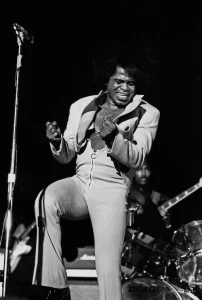
James Brown
James Brown, known as the “Godfather of Soul,” had a major influence on both rock and roll and funk music. His intense energy, rhythmic vocal style, and powerful stage presence set new standards for live performance. Brown’s focus on rhythm, especially the downbeat or “on the one,” laid the foundation for funk music. Hits like “Papa’s Got a Brand New Bag” and “I Got You (I Feel Good)” showcased his innovative blend of soul, R&B, and groove-based beats. His band’s tight arrangements and syncopated rhythms inspired funk legends like George Clinton and Sly Stone, while rock artists such as Mick Jagger and Prince drew from his dynamic style and showmanship. Brown’s legacy reshaped modern music.
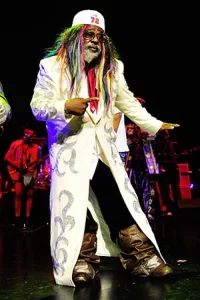
Parliament-Funkadelic (George Clinton)
George Clinton, the mastermind behind Parliament-Funkadelic, revolutionized funk music and left a lasting impact on rock and roll. Blending psychedelic rock, soul, and funk, Clinton created a wild, experimental sound full of heavy basslines, layered rhythms, and cosmic themes. His theatrical performances and sci-fi-inspired stage shows broke boundaries, influencing artists across genres. Albums like Mothership Connection and Maggot Brain pushed funk into new creative territory, with guitar solos and production styles that echoed rock traditions. Clinton’s work inspired funk rock bands like the Red Hot Chili Peppers and influenced hip-hop through his frequently sampled grooves. His bold, genre-defying approach helped shape the future of modern music and made funk a powerful cultural force.
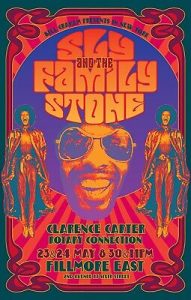
Sly & The Family Stone
Sly & The Family Stone were pioneers in blending rock, soul, and funk into a bold, unified sound that helped shape modern music. Led by Sly Stone, the group broke racial and gender barriers with its diverse lineup and powerful message of unity and equality. Their music featured tight grooves, syncopated basslines, and layered vocals, as heard in hits like “Dance to the Music” and “Thank You (Falettinme Be Mice Elf Agin).” They brought funk into the mainstream while infusing it with the raw energy of rock and roll. Sly’s innovative use of rhythm, electric instruments, and socially conscious lyrics influenced artists like Prince, George Clinton, and countless funk-rock bands that followed.
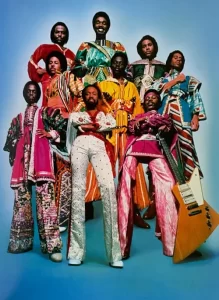
Earth, Wind & Fire
Earth, Wind & Fire brought a powerful fusion of funk, rock, soul, jazz, and R&B that reshaped popular music in the 1970s. Known for their dynamic horn section, tight rhythms, and uplifting lyrics, they blended musical precision with high-energy stage performances. Songs like “Shining Star” and “September” showcased their innovative mix of groove-heavy basslines, vocal harmonies, and rock-influenced guitar work. Their use of African and Latin rhythms added global flair to funk and rock music. Led by Maurice White, the band’s positive messages and genre-crossing style influenced artists across funk, rock, and pop. Earth, Wind & Fire proved that funk could be both sophisticated and soulful, paving the way for future generations of genre-blending musicians.
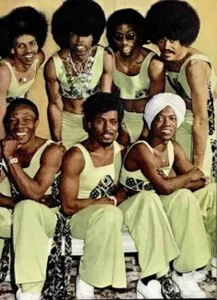
The Ohio Players
The Ohio Players were key figures in shaping the sound of 1970s funk and its crossover into rock and roll. Known for their tight grooves, bold horn sections, and edgy album covers, they brought a raw, sensual energy to funk music. Songs like “Fire” and “Love Rollercoaster” featured powerful rhythms, distorted guitar riffs, and soulful vocals that appealed to both funk and rock audiences. Their blend of jazz, soul, and rock elements helped expand the boundaries of funk, influencing artists in multiple genres. The band’s musicianship and willingness to experiment with sound and style set a high standard for live and studio performance. Their legacy lives on in funk-rock hybrids and heavily sampled beats in modern music.
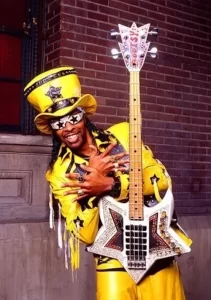
Bootsy Collins
Bootsy Collins, with his star-shaped glasses and flamboyant style, brought a unique blend of funk, rock, and personality to music. As the bass player for James Brown and later Parliament-Funkadelic, Bootsy helped define the deep, driving basslines that became the backbone of funk. His playful, rhythmic slap-bass technique added a new level of groove and energy, influencing both funk and rock musicians. With hits like “Bootzilla” and “I’d Rather Be With You,” Bootsy combined psychedelic flair with funk’s raw power. His stage presence, creative spirit, and bold sound pushed funk into the spotlight and helped bridge the gap between funk and rock. Bootsy’s influence is still heard today in funk-rock, hip-hop, and modern R&B.
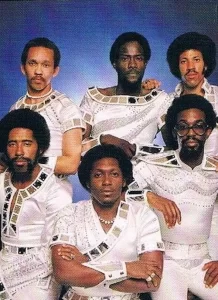
The Commodores
The Commodores made a lasting impact on music by blending funk, soul, and pop into a smooth, accessible sound that reached a wide audience. Formed at Tuskegee University and signed by Motown, they delivered energetic funk hits like “Brick House” alongside soulful ballads such as “Easy” and “Three Times a Lady.” Their versatility allowed them to cross genres, influencing both R&B and pop music. With Lionel Richie as a key songwriter and vocalist, the band introduced heartfelt storytelling into mainstream music. Their polished musicianship, catchy melodies, and emotional depth set a high standard for funk-pop fusion. The Commodores helped shape the sound of the late ’70s and paved the way for future R&B and pop artists.
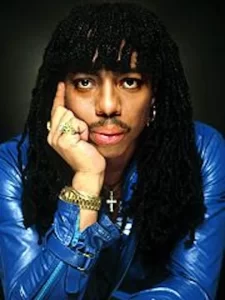
Rick James
Rick James was a bold and influential figure who helped shape the sound of funk, R&B, and pop in the late 1970s and 1980s. With his flamboyant style and rebellious attitude, he fused the raw energy of rock with the groove of funk, creating hits like “Super Freak” and “Give It to Me Baby.” His music featured driving basslines, synth-heavy arrangements, and catchy hooks that appealed across genres. As a producer and performer, James also helped launch the careers of artists like Teena Marie. His unapologetic persona and genre-blending sound influenced future stars like Prince and paved the way for funk’s influence in hip-hop and modern R&B. Rick James made funk louder, wilder, and more mainstream.
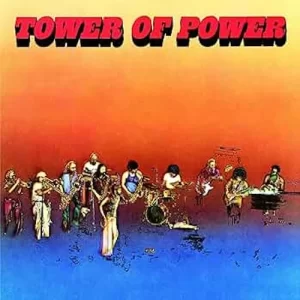
Tower of Power
Tower of Power made a powerful impact on music with their signature horn-driven sound that blended funk, soul, jazz, and rock. Formed in Oakland, California, the band became known for tight arrangements, punchy brass sections, and complex rhythms. Songs like “What Is Hip?” and “Soul Vaccination” showcased their high-energy style and musical precision. Their groundbreaking use of horns influenced countless funk and rock bands, and they became sought-after collaborators for artists like Elton John, Santana, and Aerosmith. Tower of Power raised the standard for horn sections in popular music and helped define the sound of West Coast funk. Their influence continues to be heard in funk, R&B, and horn-based rock bands across generations.
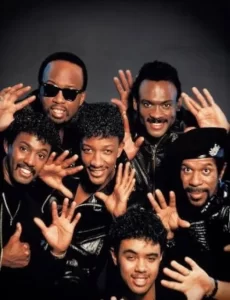
Kool & the Gang
Kool & The Gang played a key role in shaping the sound of funk, R&B, and pop from the 1970s through the 1980s. Starting with jazz roots, they evolved into a powerhouse funk band with hits like “Jungle Boogie” and “Hollywood Swinging,” known for infectious grooves, strong horn lines, and danceable rhythms. In the 1980s, they shifted toward smooth pop-funk with chart-toppers like “Celebration” and “Cherish,” blending feel-good energy with crossover appeal. Their ability to adapt across decades helped them stay relevant, influencing artists in funk, soul, hip-hop, and pop. Kool & The Gang’s upbeat sound and versatile style made them a staple of party anthems and a lasting force in modern music.